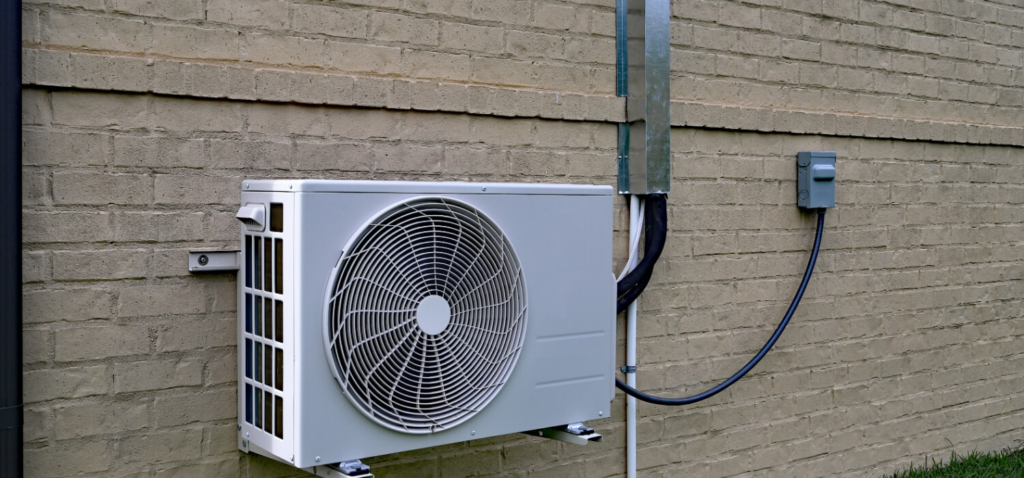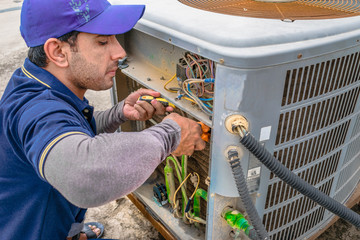Air Conditioning Installation Requirements
If you are considering replacing your existing AC unit with a new one, you will first need to determine the costs associated with installation. You may also need to replace ductwork or electrical connections. The cost of air conditioning installation depends on several factors, including the square footage of your home and your desired comfort. If your home has good insulation, you may not need to install an air conditioner. However, if the weather is extremely hot, you might consider an air conditioner with more powerful features. You might need a more powerful unit if you have an old house with low insulation. A home with little or no natural light may need an extra-powerful unit. The air conditioning installation process also involves testing the electrical connections and adding refrigerant to the system according to the manufacturer’s instructions. Here are some steps that All Temp Air Conditioning & Refrigeration companies should follow:

Cost Of A New Package Unit
Getting a new package AC unit can save you money and energy. Those with higher Seer ratings will run your AC unit more efficiently. Compared to older units, newer units also last longer. If you’re looking for an air conditioning installation company, look for a local company that offers a package unit. A local distributor will typically have everything you need in stock. During the summer, air conditioning companies are busy with heat waves and summer months, so planning for the replacement is best done in the early spring.
The cost of a new package unit for air conditioning installations depends on the type of unit that you want. A package unit can be significantly cheaper than a separate furnace and air conditioning system. Alternatively, you may want to replace your existing system and opt for a high-efficiency geothermal system. You can also opt for a residential small package system, which includes both an indoor and outdoor unit in the same cabinet.
Requirements For A Professional Installation
The process of installing a new air conditioning system has evolved over the past few years. There are some basic requirements for the installation process, and there are many different methods that can be used. Hiring a professional installer is the best option when you want to avoid problems, such as having to crawl under your house and lifting heavy components. The process also involves pouring concrete and climbing on a roof. The benefits of hiring a professional are obvious: they take care of all of the paperwork and the end product is a quality, efficient, and long-lasting air conditioning system.
Cost Of A Split-System Unit
The cost of a mini-split system can vary significantly. The cost of a single-room mini-split unit is around $400, while the cost of a full-house mini-split system can run up to $20,000. The outdoor condenser unit is a required component of a mini-split system and costs anywhere from $1,000 to $6,000 in total. Indoor air-handling units typically cost $400 to $2,000 and can be mounted to a wall or ceiling.
The SEER rating of the unit is important, as it determines how energy-efficient it is. The higher the SEER rating, the more efficient the HVAC unit is. In areas where temperatures are extreme, buying a high-SEER-rated system will save you money on your energy bills. Energy-efficient units may also qualify for local or utility rebates and tax credits. While they cost more upfront, higher-SEER units will save you money over time.
Mini-split systems are typically less expensive than multi-zone units, and you can choose the number of zones you need. A six-zone mini-split system, for example, may cost $11,100 to $26,200. Depending on the size of your home, the six-zone mini-split can only cool one area at a time, so the cost may be a good option for a single-bedroom home. In addition to mini-splits, you can also opt for cassette-style models if you want to cool multiple rooms.
Requirements For Commissioning A New System
Commissioning a new air conditioning system requires a professional with specific knowledge of commercial HVAC systems. They must know about products and controls, the relevant construction codes, and control strategies. In addition, commissioning requires close coordination with contractors, designers, and manufacturers. Listed below are the requirements for commissioning a new air conditioning system. These requirements will be necessary for the successful completion of the installation.
Time constraints can cause problems during the commissioning process. A rushed project may result in incorrect wiring and configuration settings. To avoid such problems, commissioning teams must carefully train everyone involved in the project. Addressing outdoor units during the commissioning process can be problematic, especially if they are not yet fully installed. Commissioning a new HVAC system should be part of an ongoing documentation process. Ensure that the HVAC system will work as designed during its entire life cycle.
The commissioning process can be done for a single building system, or it can cover an entire facility. Comprehensive commissioning has a greater impact on the performance of the school. During commissioning, an independent party, a building owner, or a school district staff member will act as a commissioning agent. The commissioning agent will be responsible for a clear statement of design intent, writing commissioning specifications, and performing pre-functional and functional testing.
Pre-Installation Evaluation
A pre-installation evaluation for air conditioning installation is an important part of any AC project. These inspections can cost anywhere from $250 to more than $2,000. They can also help you avoid unforeseen setbacks. Some older homes lack ductwork, making a pre-installation evaluation essential. To minimize this cost, you should contact your local utility company and inquire about rebates and other incentives available for new customers. This way, you can choose an air conditioning installation company that will work best with your home’s needs.
The first step in an AC installation project is a pre-installation evaluation. A professional HVAC contractor will evaluate your home’s energy load to determine the cooling power you’ll need and recommend the best-sized air conditioning system. Almost all air conditioning installation issues stem from an incorrectly-sized system, so you’ll want to make sure your air conditioner is appropriately sized. A pre-installation evaluation helps you avoid many common problems that can arise in the installation process.
The air conditioning contractor should start with a manual calculation. This calculation measures how much heat you’ll be losing through windows or doors and determines the right size air conditioning system for your home. Choosing the right size air conditioner depends on several factors, including insulation, the number of rooms, the location of doors and windows, and the orientation of the home. During the evaluation, your air conditioning contractor should also note any inefficiencies in the home. If these issues are not fixed, the cost of an air conditioning installation could double or even triple.
Requirements For Proper Disposal Of Refrigerant
Requirements for proper disposal of refraction in the air-conditioning installation are set by EPA regulations. These regulations aim to prevent emissions of refrigerant when appliances are disposed of. As part of the disposal process, refrigeration equipment must be dismantled on-site and the refrigerant recovered. The final person involved in the disposal process is responsible for recovering the refrigerant.
There are strict requirements for the disposal of refrigerants, including EPA certification. It is illegal to vent the chemicals. Only certified technicians are allowed to remove Freon legally and properly dispose of it. They must pass certification exams from the Environmental Protection Agency (EPA).
Refrigerants should be leak-tight, with leak detection systems installed, and properly disposed of. When upgrading or decommissioning an existing air conditioning installation, proper disposal is critical. A new system could offer significant energy savings, but it is important to check that all the requirements are met before proceeding. The new system may even offer considerable energy savings, making it worth it to upgrade.


